Oral light therapy, in the form of low level lasers and LEDs, has been used in dentistry for decades now. As one of the most well studied branches of oral health, a quick search online (as of 2016) finds thousands of studies from countries all over the world[1] with hundreds more every year.
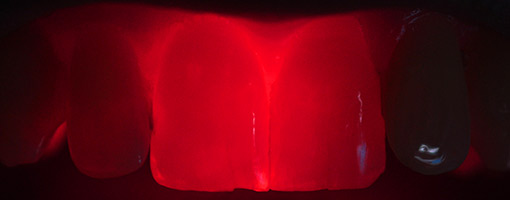
The quality of the studies in this field vary, from preliminary trials to double blind placebo-controlled studies. Despite this breadth of scientific research and the widespread clinical use, at-home light therapy for oral issues is not yet pervasive, for a variety of reasons. Should people start doing oral light therapy at home?
Contents
Teeth Conditions Helped
Oral Hygiene
Sensitive teeth
Toothache and pain
Braces
Red light’s mechanism in body
Bottom Line
Recommended Products
References
Medical & Healthcare Disclaimer
The information contained in this article is not intended or implicitly suggested to be an alternative for professional diagnoses, or profesionally recommended treatments & medical advice. Absolutely all of the content, including the article text itself, images, comments and other information, contained on this web page is for non-specific information purposes only. We strongly suggest that one should never ignore professional health/medical advice and we strongly suggest that one must not delay seeking a professionally recommended medical treatment because of information attained via reading this article/website. The products sold or recommended on this web site are absolutely not for the diagnosis, prevention, monitoring, treatment or alleviation of any specific disease, injury or disability.
Teeth conditions that benefit
Studies look at various oral issues, including but not limited to:
- Sensitive teeth (dentin hypersensitivity)[8-12]
- Tooth[1-7] & bone damage[18-24]
- Bacteria counts (tooth decay causing bacteria)[13-17]
- Oral thrush/candidiasis[14, 36, 42]
- Orthodontic teeth movement[28-33]
- Gum inflammation & oral wounds in soft tissue[25-27]
- Recovery from surgery (gums and jaw bones)[19, 24, 25, 29]
- Ulcers, cold sores, tonsillitis, other viral/bacterial infections[5, 14, 27, 36-38]
Less than 10% of the studies show neutral or negative effects, although on critical inspection many of these use questionable doses and non-standard parameters [35].
Oral hygiene: is red light therapy comparable with toothbrushing?
One of the more surprising findings from examining the literature is that light therapy at specific wavelengths reduces oral bacteria counts and biofilms. In some, but not all, cases to a greater extent than regular tooth-brushing/mouthwash [13,14].
The studies done in this area are generally focused on the bacteria most commonly implicated in tooth decay / cavities (Streptococci, Lactobacilli)[14-15] and tooth infections (enterococci – a species of bacteria linked to abscesses, root canal infections and others)[16-17]. Red light (or infrared, 600-1000nm range) even seems to help with white or coated tongue problems, which can be caused by several things including yeast[42] and bacteria.
While the bacterial studies in this area are still preliminary, the evidence is interesting. Studies in other areas of the body also point to this function of red light in preventing infections. Is it time to add red light therapy to your oral hygiene routine?
Tooth sensitivity: can red light help?
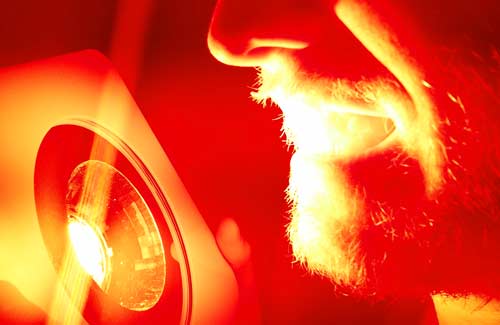
Having a sensitive tooth is stressful and directly reduces quality of life – the afflicted person is no longer able to enjoy things like ice cream & coffee. Even just breathing through the mouth can cause pain. Most people afflicted have cold sensitivity, but a minority have hot sensitivity which is usually more serious.
There are dozens of studies on treating sensitive teeth (a.k.a. dentin hypersensitivity) with red and infrared light, with interesting results[8-12]. The reason researchers were originally interested in this is because unlike the enamel layer of teeth, the dentin layer actually regenerates throughout life via a process called dentinogenesis. Some believe that red light has potential to improve both the speed and effectiveness of this process, working to improve metabolism in odontoblasts – the cells in teeth responsible for dentinogenesis.
Assuming there is no filling or foreign object that may block or hamper dentin production, red light treatment is something interesting to look into in your battle with sensitive teeth.
Toothache: red light comparable to regular painkillers?
Red light therapy is well studied for pain problems. This is true for teeth, just as much as anywhere else in the body. In fact, dentists use low level lasers in clinics for this exact purpose[26].
The proponents claim that the light doesn’t just help with the symptoms of pain[31, 39], saying that it actually helps on various levels to treat the cause (as already mentioned – potentially killing bacteria & rebuilding teeth, etc.).
Dental Braces: oral light therapy useful?
The vast majority of total studies in the oral light therapy field focus on orthodontics. It’s no surprise that researchers are interested in this, because there is evidence that tooth movement speed in people with braces can potentially increase when red light is applied[28-30, 32-33]. This means that by using an appropriate light therapy device, you might be able to get rid of your braces much sooner and get back to enjoying food and life.
As mentioned above, red light from an appropriate device might help to reduce pain, which is the most significant and common side effect of orthodontic treatment. Pretty much everyone who wears braces has moderate to severe pain in their mouth, on an almost daily basis. This can negatively affect which foods they are prepared to eat and can cause dependance on traditional painkillers such as ibuprofen and paracetamol. Light therapy is an interesting and not commonly thought of idea to potentially help with the pain from braces[31].
Teeth, gum and bone damage: better chance of healing with red light?
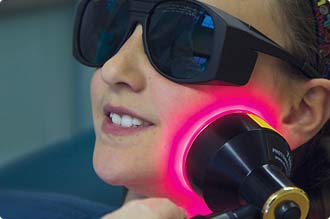
Damage to teeth, gums, ligaments and bones supporting them, can happen for a variety of reasons, including natural decay, physical trauma, gum disease & implant surgery. We’ve talked above about red light potentially healing the dentin layer of teeth but it has also shown promise for these other areas of the mouth.
Several studies look at whether red light can speed up healing of wounds and reduce inflammation in the gums[25-27]. Some studies even look at the potential to strengthen the periodontal bones without the need for surgery. In fact, red and infrared light are both well studied elsewhere on the body for the purpose of improving bone density (by supposedly interacting with osteoblast cells – the cells responsible for bone synthesis)[18-24].
The leading hypothesis explaining light therapy states that it ultimately leads to higher cellular ATP levels, allowing osteoblasts to perform their specialised primary functions (of building a collagen matrix and filling it with bone mineral).
How does red light work in the body?
It might seem strange that light therapy is studied for practically all oral health problems, if you don’t know the mechanism. Red and near infrared light are thought to act primarily on the mitochondria of cells, leading to greater energy (ATP) production. Any cell that has mitochondria will, in theory, see some benefit from appropriate light therapy.
Energy production is fundamental to life and to the structure/function of cells. Specifically, red light photodissociates nitric oxide from the cytochrome c oxidase metabolism molecules within mitochondria. Nitric oxide is a ‘stress hormone’ in that it limits energy production – red light negates this effect.
There are other levels on which red light is thought to work, such as by perhaps improving the surface tension of cell’s cytoplasm, releasing small amounts of reactive oxygen species (ROS), etc., but the primary one is increasing ATP production via nitric oxide inhibition.
The ideal light for oral light therapy?
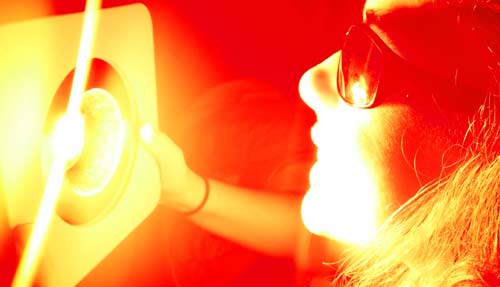
Various wavelengths are shown to be effective, including 630nm, 685nm, 810nm, 830nm, etc. Several studies compare lasers to LEDs, which show equal[40-41] (and in some cases superior[16]) results for oral health. LEDs are much cheaper, being affordable for at-home use.
The key requirement for oral light therapy is the ability of the light to penetrate the cheek tissue, and then to also penetrate the gums, enamel and bones. Skin and surace tissue blocks 90-95% of incoming light. Stronger sources of light are therefore necessary with regard to LEDs. Weaker light devices would only have an effect on surface issues; unable to eliminate deeper infections, treat gums, bones and harder to reach molar teeth.
If the light can penetrate the palm of your hand to some extent it will be suitable to penetrate your cheeks. Infrared light penetrates to a slightly greater depth than red light, although the power of the light is always the primary factor in penetration.
It would therefore seem appropriate to use red/infrared LED light from a concentrated source (50 – 200mW/cm² or more power density). Lower power devices can be used, but the effective application time would be exponentially higher.
Bottom line
- Red or infrared light is studied for various parts of the tooth and gum, and regarding bacteria counts.
- The relevant wavelengths are 600-1000nm.
- LEDs and lasers are proven in studies.
- Light therapy is worth looking into for things like; sensitive teeth, toothache, infections, oral hygiene in general, tooth/gum damage…
- People with braces would definitely be interested in some of the research.
Red and infrared LEDs are both studied for oral light therapy. Stronger lights are required for penetration of cheek/gums.
Recommended Lights
References:
Tooth regeneration:
- Pubmed ID: PMC4113395 – Photoactivation of Endogenous Latent Transforming Growth Factor–β1 Directs Dental Stem Cell Differentiation for Regeneration
- Pubmed ID: 9409045 – The current status of low level laser therapy in dentistry. Part 2. Hard tissue applications.
- Pubmed ID: PMC3601343 – Periodontal Bone Regeneration and the Er,Cr:YSGG Laser: A Case Report
- Pubmed ID: 15478483 – Argon laser irradiation and fluoride treatment effects on caries-like enamel lesion formation in primary teeth: an in vitro study.
- Pubmed ID: 25240388 – Low-level laser therapy as an alternative for pulpotomy in human primary teeth.
- Pubmed ID: 24974864 – Clinical and radiographic outcomes of the use of Low-Level Laser Therapy in vital pulp of primary teeth.
- Pubmed ID: 24858234 – The effect of low-level laser therapy (810 nm) on root development of immature permanent teeth in dogs.
Sensitive teeth:
- Gerschman J A et al. Low Level Laser in dentine hypersensitivity. Australian Dent J. 1994; 39: 6.
- Pubmed ID: 20589404 – Low-level laser therapy of dentin hypersensitivity: a short-term clinical trial.
- Pubmed ID: 24197517 – Clinical evaluation of low-power laser and a desensitizing agent on dentin hypersensitivity.
- Pubmed ID: 20863237 – Effects of the combined desensitizing dentifrice and diode laser therapy in the treatment of desensitization of teeth with gingival recession.
- Pubmed ID: 19281413 – Clinical evaluation of Nd:YAG and 685-nm diode laser therapy for desensitization of teeth with gingival recession.
Mouth bacteria:
- Pubmed ID: 2145417 – Comparative effects of toothpaste brushing and toothpaste rinsing on salivary bacterial counts.
- Pubmed ID: 22189647 – In Vitro effect of low-level laser therapy on typical oral microbial biofilms.
- Susceptibility of Streptococcus mutans biofilms to photodynamic therapy: an in vitro study – Iriana Carla Junqueira Zanin et al.
- Pubmed ID: 26241781 – A Comparison of the antibacterial activity of the two methods of photodynamic therapy (using diode laser 810nm and LED lamp 630nm) against Enterococcus Faecalis in extracted human anterior teeth.
- Pubmed ID: 21787505 – Evaluation of photodynamic therapy using a light-emitting diode lamp against Enterococcus faecalis in extracted human teeth.
Bone:
- Pubmed ID: 25653816 – Effect of low level laser therapy on proliferation and differentiation of the cells contributing in bone regeneration.
- Pubmed ID: 26511218 – Bone healing after low-level laser application in extraction sockets grafted with allograft material and covered with a resorbable collagen dressing: a pilot histological evaluation.
- Pubmed ID: 14651794 – Effects of pulse frequency of low-level laser therapy (LLLT) on bone nodule formation in rat calvarial cells.
- Pubmed ID: 22138375 – Low level laser therapy (830nm) improves bone repair in osteoporotic rats: similar outcomes at two different dosages.
- Pubmed ID: 20204601 – Laser 904 nm action on bone repair in rats with osteoporosis.
- Pubmed ID: 26037661 – Low-level laser therapy improves bone formation: stereology findings for osteoporosis in rat model.
- Pubmed ID: 16503787 – Laser therapy improves healing of bone defects submitted to autologous bone graft.
Oral wound healing:
- Pubmed ID: 25867988 – Periodontal and peri-implant wound healing following laser therapy.
- Pubmed ID: 24656472 – Developments in low level light therapy (LLLT) for dentistry.
- Pubmed ID: PMC3977514 – Use of Low Level Laser Therapy for Oral Lichen Planus: Report of Two Cases
Orthodontic:
- Pubmed ID: 22350425 – Effect of low-level laser therapy (LLLT) on orthodontic tooth movement
- Pubmed ID: PMC3955317 – Effects of low-level laser therapy on orthodontic tooth movement and root resorption after artificial socket preservation
- Pubmed ID: PMC4264099 – Effect of Low Level Laser Therapy on Orthodontic Tooth Movement: A Review Article
- Pubmed ID: 22775467 – Efficiency of low-level laser therapy in reducing pain induced by orthodontic forces.
- Pubmed ID: 19840281/ – Low-energy laser irradiation accelerates the velocity of tooth movement via stimulation of the alveolar bone remodeling.
- Pubmed ID: 23883115 – Influence of low-level laser therapy on the rate of orthodontic movement: a literature review.
General
- Tunér J, Hode L. Low level laser therapy – clinical practice and scientific background. ISBN 91-630-7616-0.
- Tunér J, Hode L. It´s all in the parameters: a critical analysis of some well-known negative studies on low-level laser therapy. Journal of Clinical Laser Medicine & Surgery. 16 (5): 245-248.
- Pubmed ID: 15954824 – Effect of low-level laser therapy on Candida albicans growth in patients with denture stomatitis.
- Pubmed ID: PMC3972568 – Efficacy of Low-Level Laser Therapy in Treatment of Recurrent Aphthous Ulcers – A Sham Controlled, Split Mouth Follow Up Study
- Pubmed ID: 19161055 – Low-level-laser therapy as an alternative treatment for primary herpes simplex infection: a case report.
- Low level laser therapy (LLLT) for orofacial pain – Seyyedi et al
- Laser Ther. 2011; 20(3): 205–215. Is light-emitting diode (LED) phototherapy really effective? Won-Serk Kim and R Glen Calderhead
- An Bras Dermatol. 2014 Jul-Aug;89(4):616-23. Effects of low-power light therapy on wound healing: LASER x LED. Chaves ME et al., 2014
- Pubmed ID: 11862203 – Treatment of oral candidiasis with methylene blue-mediated photodynamic therapy in an immunodeficient murine model.

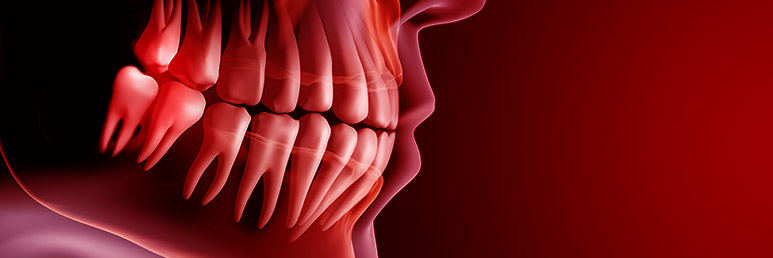
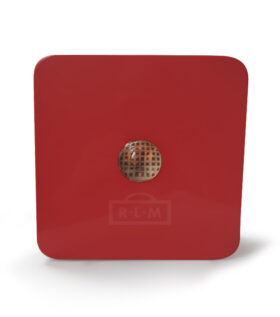
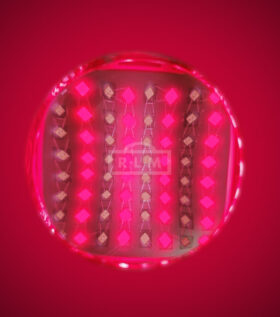
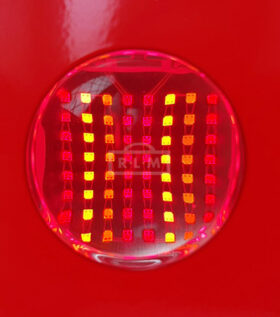
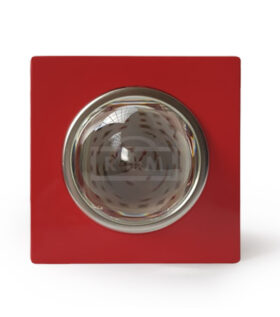
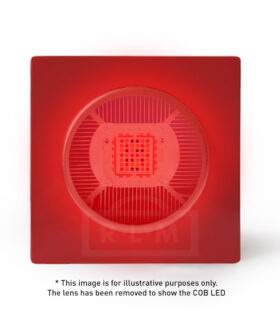
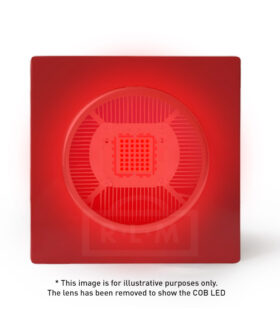
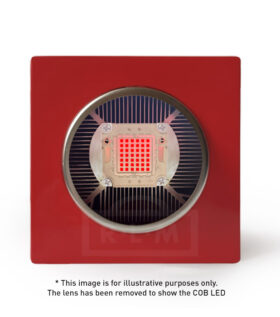
Could this help with an impacted wisdom tooth?
Perhaps, it may improve the pain, inflammation and even infections that occur with impacted teeth. I don’t think it could straighten the tooth though. So if your wisdom tooth is coming in at an extreme angle, it’s worth applying red light for now, but still seek a professional opinion.
I wasn’t aware that red light could affect bone structures. Amazing.
I’m surprised this isn’t more widely implemented to treat osteoporosis in older people.
I think the problem arises from bones being deep inside the body. Penetration rates of light vary from person to person (skin colour, hair, body fat, etc.) so it’s hard to have a standardised treatment protocol. Some bones like the jaw are easy to treat, but many are difficult to reach even with high powered light sources.
That’s really amazing, that it’s as good as brushing teeth. Red light really seems like such a miracle cure for a lot of things. I have sensitive teeth and oral thrush, maybe I should invest in a red light and not only rely on teeth brushing and tongue scraping.
Well, we can’t say that definitively. In terms of infections and bacteria, ‘photodynamic therapy’ seems to be better than light therapy alone. This is basically the combination of standard red light with light ‘sensitiser’ chemicals such as methylene blue. Look at the last study we referenced above for more info on oral thrush.
You mention methylene blue, which I am now taking regularly. I am interested in doing red light therapy, especially for my teeth and gums.
Should I do the RLT just after taking methylene blue, or just before, or does the timing not matter?
I would caution against mixing methylene blue with red light therapy. Just search online for ‘photodynamic therapy’ and you’ll see why I’m saying that.
Near infrared light therapy (Wavelengths 750-850nm) may be a better combination with methylene blue.
How can your products be used to effectively reach the molars and backsides of the teeth?
While I would not give a specific medical recommendation, using an appropriate device directly on the cheek over the molar’s position should be suitable (if you have a beard it’s better to shave first).
Is it safe to use the device directly on the cheek, given that the cheek is so close to the eyes? I’m mostly worried about the NIR light and the heat that can produce.
It is, yes. NIR at the light therapy wavelengths (700-850nm) doesn’t produce heat – there’s a tiny bit, but not significantly more than visible light wavelengths. The same NIR range and 830nm are healthy for the eyes. You can and should use the devices directly on the cheek.
Great information here. Thanks!
Thanks for reading Peter.
Really excited to try this out!
Really cool. Thank you.
As someone who’s struggling with a root canal infection right now, I believe red light therapy could help prevent any other one in the future, which would be awesome.
Oh definitely. The bacteria that remain in the root can be hard to affect since they are effectively sealed off. Perhaps red or infrared light is one of the things that can potentially have an impact.
Also ozone therapy is promising as well for teeth.
Infrared therapy works very well on my root canal infection – can really recommend.
I bought a red LED laser to use on my back molar after a dentist nicked the root cleaning out a cavity. The tooth was painful so I avoided chewing on that side. I stuck the pen-shaped laser in my mouth and put it on each side and top of the tooth. First time, I had a huge reaction with increased swelling, which told me the healing process was being stimulated. Next time, I did a little shorter exposure, and after that no reaction. It took about 8 months but I can now chew on that side without discomfort. Now I think I’ll try it on some tender areas of gum. Thanks for this blog.
Thanks for the anecdote Janis. That’s really interesting. I know that people with severe tooth pain can have trouble locating the actual tooth responsible, as the pain spreads to all nearby areas. I have heard that dentists or patients can use red lasers on individual teeth like you did, and judging by the reduction in pain, they can locate the troublesome tooth.
i did the same thing with a red led light for gum disease it worked up to the point but that gum disease is persistent lol. also it repaired your facial skin and made you look much younger. even i had to give a number i would say 10 years younger.
also have you considered sound therapy???
This information is just fascinating. To imagine the power we have to instigate self healing , all within a single bulb emitting red infrared light!
Just amazing!
Hi!
You state:- We recommend 50-200w of red/infrared LED light from a concentrated source (200mW/cm² or more power density). Lower power devices can be used, but the effective application time would be exponentially higher.
So with the 11w mini lamp ordered, how long would you use it for to get acceptable results.
Thanks
Hi Carole,
Thanks for bringing this to my attention. That info is out of date. It’s mainly the light density output that matters, with anything over about 50mW/cm2 penetrating well. Higher wattage devices cover a wider range of skin surface area so lead to shorter treatment times.
With the infrared light mini, I’d use it from a distance of 0 – 40 cm, for any length of time from 4 minutes to 30 minutes a day, or more.
I had an accident 2 years ago that impacted my 2 front teeth. At the time i took medicine to deal with the pain, but I refused to get root canals done, which is what my dentist at the time recommended. I’ve had sensitivity on those two teeth ever since. Yesterday I visited another dentist. He took xrays and found black spots on the roots of those two teeth, and suggested I come back to do a 3D scan to get a better look. From what he could see on the xray, he felt that the teeth were almost dead, and said that we’d have to most probably extract them and put implants, or do root canals. I have a follow up in a few weeks for the 3D xray. I’ve been reading on light therapy, diet, and supplements I could take in an attempt to save the teeth, but I see that on one of the sections in your article you mention that if you have fillings on the tooth, the light may not work. And unfortunately I have fillings on part of these two teeth. I was just wondering if you think I should still give light therapy a shot, and if so, what your recommendation would be for the equipment and exposure times.
Thank you
I’m sorry to hear about your situation Michelle. I hope you find some recovery.
Sounds like light therapy might be of interest, simply due to the amount of x-ray radiation you are being exposed to.
If you do go down the dental implants route, light therapy may help to speed the healing.
I’m not sure if light would help save your teeth or not. It sounds like you have significant damage, a possible infection and then fillings which could obstruct healing. If I was you I would be doing daily light therapy on the area, whether they can be saved or not. The is just to strengthen the area for future implants, reduce chances of infections from root canals and possibly save the teeth by regenerating some dentin.
Thank you for the prompt reply. I think I’m going to give this a shot since I have nothing to lose by trying. Thank you for the advice!
Hi Michelle,
Since you are in the same position as I am (stubbornly refusing a root canal lol) I thought Id share some resources that I have found. Look up Biomimetic dentistry. They beleive in saving the teeth and say they can avoid root canals in 90% of cases.
Also this site is great: healingteethnaturally.com
Good luck and dont give up! I figure if they hurt they are alive and thats how I want them to stay! Im curious to find out what results you might have had with the red light?
Hi, I suffer with a condition called Mitochondrial Myopathy. I have a Infrared Light Device, can this help to cure my condition? And if so where should I apply the device for maximum aid?
Hey Francis, I’m not sure about that. According to the research, infrared light is good for mitochondria but I’m not sure exactly what’s going on with that condition. I would encourage you to look into some studies on your specific issue done with lasers or LEDs and see what they did, if there are any.
This is so interesting! I love your site!
So, after reading a few of the articles above, it looks like 630nm (or basically near there) seemed to be most effective against oral bacteria. Did I read that right? Also the 810-830nm seem most effective for people wearing braces. Am I reading that correctly? This is new to me.
I want to get a light for my daughter to help facilitate tooth movement while she’s wearing braces. I was thinking about getting the infrared mini for this. What are your thoughts on the model and treatment times?
Thanks!
Some of the studies referenced above indicate that light between 600-900nm will be effective against oral bacteria, as will blue light.
Infrared at 830nm is perhaps slightly beter for things like braces due to the better penetration over red.
Does it help with receding gums?
Possibly, although it depends on the cause to some extent. It should help with inflammation and maintain the tissue, but if you have vitamin deficiencies for example, it won’t be able to correct that.
Hi, I’m in middle of mercury fillings to be removed . I have one more upper tooth under a crown and then lower jaw below it has another infected root canal sitting on a small cavitation. My next surgery is to be both root canals pulled and 5 cavitatons. I can’t do this last part at the moment too costly. So I spilt it up next month teeth removed with that one cavitation (they are using my own blood to fill cavity hole) then by Sept do the rest of cavitations.
In meantime, I’m a seasoned aesthetician and I have blue, red and amber colors of LED therapy.
I use blue for acne and thought to use it on my cheeks 5 days a week for 20 min each just on jawline along with swishing every morning with cold pressed sesame seed oil for 10 min daily.
After reading this site I will use the Red for my cavitation infection til Sept.
Any thoughts to this protocol? How long should I use the red light? 10 or 20 min? Daily?
Thanks a bunch!
I have a hairline crack in a tooth and I believe my root has become infected. Can the red light therapy effectively kill an infection in the root? My goal is to avoid a root canal or extraction. Thanks!
There is a good chance, although it depends on the type of bacteria to some extent. You should use a high dose. An infection could come back in future if you do have an open crack in the tooth, so using it preventatively would be useful.
Can it help with tongue healing? My tongue has a crack, perhaps related to medical treatments I have had in the past. I also get mouth ulcers on a fairly consistent basis.
Perhaps, I have seen some research on that, in addition to more general healing elsewhere on the body.
Matt – a crack on the tongue can be related to B12 deficiency – might be worth researching.
Try cutting wheat out from your diet. That is always the cause of my 10 years of chronic mouth ulcers. It was a food allergy.
My daughter was adopted from China 6 years ago and a recurrent black stain forms on her teeth a few months after cleaning, despite her regular brushing. We have been told by the dentist that it “it just part of her flora” and they do not know how to prevent it. We have to have her teeth cleaned every 2 months. I have another daughter from China, who had this problem after her adoption, but it spontaneously went away after 2 years or so. I’m planning to buy the red light 670 to treat a number of conditions for my family members, including Hypothyroid and extremely dry skin. Do you think this would help her teeth, as well?
Hi Linda, I had a look into this just now. I’ve never heard of it before. Looks like it is a good thing according to some studies: pubmed ID: 24430339 & 25802850 – in that the bacteria responsible helps to prevent tooth decay. Seems to be caused by a class of bacteria called Actinomyces. I found one journal talking about how red laser light helps to kill this type of bacteria, but I’m not sure if it will bring about permanent changes in the oral flora.
Very fascinating information.
Can you please tell me if this therapy can help cavitations (bone infections) in March 2013 I had a top left partially erupted wisdom removed. In Aug2013 aged 26 my life changed due to ill health and I was diagnosed mid 2015 with Lyme disease. I go to Germany next month Feb 2017 but have always wondered if the tooth removal started the decline in health as Lyme can lay dormant for years in people until immune systems are compromised. I.e toxicity from an infected bone perhaps. I am speculating but to use a light devise on the suspected area is no big issue and if it could help would be amazing. What is the devise best suited for this application please. Thank you
I have receding gums from brushing too hard. Will this help?
Sure, there’s no guarantee it will fully resolve long term damage in cases like that, but you can be sure it will at least help to some degree.
Hi there im very curious and fascinated with this do you think the red light can help with receding gums apparently i have over brushed on the gums I think its the start of receding do you think it might help. Thank you.
Hi Mary,
It may perhaps be preventative against further recession. The earlier the better with these things.
Hi Joe,
I have granulomas under teeth which roots have been well cleaned but obviously even so my organism reacts in forming granulomas under cleaned roots teeth.
Do you think with led infrared right those granulomas could be affected and disappear? And if “Yes” which device exactly should I use?
I can’t say for sure, but it may help. It depends on what is causing them. Either way, it could help to limit any inflammation involved.
Near-infrared light penetrates the best.
Thanks for this article! I have a lot of acid erosion and sensitivity and some jaw pain (possibly from exposed nerve/pulp?), especially in my molars in the back. Which product do you think I might get, and how would I use it? Would it be effective to open my mouth so as to expose all my teeth to red light?
Hi Jackie,
A lot of the studies referenced above use a red light via an open your mouth and expose the teeth that way. 670nm lights are a popular choice.
Other studies use a near-infrared light (more penetrative than red) through the cheek tissue and target the teeth that way.
Thank you Joe. If I could just get one, which one would be better? Also, have you seen this? What do you think of it? jellenproducts.com/dpl-oral-care-light-therapy-system
Is there any danger to the bonding or caps on my teeth if using this for gum treatment?
Hi Betty, I don’t think so. There are several hundred studies with light on oral health now and I’ve never seen a contradiction related to that.
I have just ordered the Red-Infrared Combo Light and well today was at the Dentist’s who has said I need to get an impacted wisdom tooth pulled out as it has decay on it…..I may get the light by the time I get this surgery done….so would it be ideal using it post surgery to recover or lessen the pain?
Where can I buy a laser light to heal a abrasion on my gum which between back bottom molar and tongue? one of the doctors I work with told me about this treatment
I have a pretty severe case of dry mouth. It’s beginning to cause oral health problems with my former beautiful very healthy teeth; receding gums, caries, my tongue and gums feel irritated and sore all the time. I don’t believe I have any sort of vitamin deficiency, doctors, dentists can’t seem to find any problem that would cause this. Seem to blame it on stress, post menopausal catch all problems. What do you think? Could red light therapy help me
WOW! Thanks for the information! I have a question.. So I had purchased the red light that’s 250W and the dome fixture that’s 200W Max it says.. will it still be safe to use?
I don’t know. It will probably still work fine in terms of the electrical circuit, but the heat might cause damage to the fixture over time.
Greetings Joe,
I have a few of your devices. They work quite well. Regarding using using your 830nm device (Power Density 200 mW/cm2 (at 10cm) into an open mouth pointing up or down do you think I would need to be concerned about light going into other areas of the head? I ask because I have some interest in using the 830nm device for the brain but I want to give a great deal of respect to the dosage/time. Thanks!!
To kill Oral thrush/candidiasis do you need to open your mouth? Shine it on your tongue? Whats the process thanks?
To inhibit the growth of candida with red light, studies just point to directly exposing the candida cells to light for fairly long periods. It therefore makes sense to open the mouth, so the light hit the cells in as high a density as possible.
May infrared be used following LANAP surgery for deep pockets? How soon after the procedure can it be used?
Sure, I don’t see why not.
As for the timing I don’t know. It would be worth consulting with the provider.
I have a root canal that has been re-infected and redone + receding gums and. What specific light device could you recommend ? Thanks!
Could I use one of these on my daughters teeth, 4 of them have demineralized and 2 of them have resulted in cavities. I read about the infrared stimulating the stem cells to repair the dentin and the enamel. Would one of these work? And if so which one would you recommend. (Daughter is 5).
Thank you
I have a condition called lichen planus in my mouth and possibly else where in my system. It is understood to be an autoimmune condition. Do you know anything about this and whether infrared light would be helpful? Thank-you.
I have Lichen Sclerosus in genital area, only treatment strong steroids which has side effects. What type of light product would you suggest.
I am not sure. If I was going to use a light therapy device for that area/purpose I would start with a red (rather than near infrared).
I’m trying to apply this into my mouth to speed up the healing of wounds (after a surgical removal of tonsils). Any recommendations on how to apply this into the mouth?
Standing in front of a device with an open mouth seems of more questionable benefit than actually using an in-mouth device. Thoughts?
An in-mouth device sounds good in theory but with current technology is not feasible – it would have the same limitations as the current ‘intra-nasal’ type devices – basically being useless.
Devices with sufficient power for high power densities also generate heat, which needs dissipating with either fans, heatsinks, etc. If you want something small enough to go in the mouth, it would need to be very low power.
Light therapy through the open mouth is the only current valid way to affect the tonsil area.
What if the light is generated outside the mouth/nose at sufficient power and cooling, then delivered inside the body via optical fiber?
I haven’t seen any application of that but it could work.
Is there a device you can put in your mouth, hands free essentially? Almost like a mouth guard that lights up? I know it sounds lame but I physically can’t hold things long enough for each tooth.
It is not possible with current tech. The lights need to cool down, so being enclosed in the mouth means they would overheat. Then you have EMF concerns.
I have a piece of molar missing and the nerve is exposed. The dentist says root canal, implant or extraction. I was wondering if I take appropriate minerals, and use a recommended red light if it’s possible to grow some tooth enough to cover the nerve so I can then get a filling. If so, what red light and strength is recommended? Through the cheek or with mouth open?? Thanks for any help. I need to do something soon!
Hi Niki,
Maybe. I don’t know of anyone successfully remineralising a tooth fully. If it was an easy objective, there would be no more need for dentists. Light therapy is very useful and complementary to almost all dental operations and procedures like braces, implants, infections, sensitivity, extractions, inflammation, pain, etc. There is a clear mechanism and evidence for regrowing dentin and even maintaining it from further decay, so you might be able to get it to the point of only requiring a filling. I don’t know exactly what layers of your molar are missing in the exposed area. If the nerve is directly exposed, then I suppose the pulp of the tooth is too..and so it might be in early stages of infection/death and past the point of recovery. I do think making new dentin (and preventing decay) is possible with light therapy. If by ‘nerve exposed’ you mean that they are sensitive from exposed/weak dentin layer, it might be ok. So depending on the situation, if I had received that advice from a dentist, I would give the light therapy a try (Infrared 830 Device, through cheek, point blank on the cheek skin for 5+ mins per day). If no success, I personally would probably get an extraction (not root canal) and then use light therapy (same device) to heal the gum and grow new bone tissue – making it ready and strong for a future dental implant (or maybe just a bridge). If the pulp is clearly exposed and very likely to be infected soon, I would not mess around and get the tooth out ASAP – otherwise you are risking abscesses which can get potentially dangerous. You can sometimes tell when a tooth is ‘dead’ because it goes a greyish/translucent colour relative to the colour of other teeth.
My black small back stub of a tooth has GROWN about 25% in 4 weeks & has CLEANED up & remineralised after a crown coming off. You can only imagined what dentists wanted to do to it but I said no to an Extraction – Implant & Crown
I’m using a small red light & an oxygen light pen I purchased 30 years ago sorry there’s no name on them. I’m consuming lots of minerals & eggshells as well. The 1st 2 weeks nothing happened &
I thought No-ooo it’s not going to happen but then it started. Good Luck everybody
Mandy,
What minerals do you take and how much eggshells?
I wonder also what an oxygen pen you bought.
How does this affect teeth with mercury in the fillings? is it safe?
I’m not sure. I have never seen any info on this.
I purchased an LED blue light mouthpiece marketed for dental whitening on amazon (cheap, $20-ish) It covers all your teeth, not just the front. It has a timer, shuts off after 15 mins. I used it 3 times in a row, (45 minutes) lights only, no bleach. My morning breath is gone, the coating on my tongue is gone. The geographical crack that appeared recently is gone. Tired it on a canker sore, gone. I know these lights work and are excellent for acne/bacteria. I use the red light for my face and after a 20 minute session, I absolutely see the results. Who knew?? I recently purchased a red light mouthpiece that looks like the blue, but only red lights. I am hoping to heal some gum recession with the light and lots of collagen and vitamin supplements. Also an extremely soft toothbrush (like hair) has helped already along with an enzyme toothpaste.
Could you please let me know the brand name of the one u bought on Amazon? Does it have a blue light? I’ve only found 3 enzyme toothpaste 1 is for dogs. And did you ever find a red mouthpiece as well? Thank you anon.
anyone have experience is successfully using red light therapy on oral lichen planus?
I bought the 830 mini near infrared light to treat gum disease . I’m somewhat confused as to where the light is held and for how long. Should I open my mouth while applying the light and from what distance and for how long?
In studies, the light is either applied through the open mouth, or with a strong enough light through the cheek tissue. With the cheek tissue, having the light as close as possible to the skin is recommended. Typically session times studied are around 5 minutes.
Thanks for the information! I have an LED light bulb. I have it set to an orangish color so I should be getting some benefits at least on skin. However, my issue is that I have had severe dental jaw infections so I’m trying to apply light to my jawbone. It looks like these bulbs are only 7 watts so this light probably wont go through my cheeks right?
Hi Kyle, yes. Whenever I have measured the intensity of general light bulbs with an LED power meter, it is pretty close to zero, even some that look bright visually. Useless for therapy.
Would this help for Oral Lichen Planus?
I have lived with HERPES virus almost all my life, It’s a shameful situation, I hated my life because whenever I have flare ups I don’t feel the willingness to participate in any life activity because of the shame that the blisters and cold sore on my mouth and face put me in. but all that change the day I saw a post like this on a google post about a certain herbalist who uses his special herbal substance for treatment on how a lady claimed that he cured her of the nasty virus within three days and this email: oseweagbonifo@gmail.com was listed there as the herbalist contact and I decided to give him a try and I was not disappointed because at the end of the treatment I got my freedom. This happened after I have wasted almost all I have on a cure that didn’t work. I am thanking God for the mercy and I also want you to be free just like me that’s why I put this info here , contact him and share the good work with those who are in the same situation
Like one of the other posts I suffered trauma to my front teeth as a young person. The dentist at the time said the teeth were fine but that he needed to bind them together while the healed. Fast forward to adulthood when I started to have problems with one of the teeth and he convinced me the only way to save the tooth was to have a root canal. Forward another couple of years and now I’m told that their is not much bone holding the teeth in place and I will eventually lose these teeth and would have to implants. Is there anything that infrared light therapy could do for my situation so I can avoid any further dental trauma?
There is potential for light therapy on the jaw to improve the bone structure and density, helping to hold the teeth. Light therapy could also strengthen the tooth and prevent infection.
Which wavelength would be ideal for that, 830 nm? (strengthening teeth and helping with jawbone issues)
Any light therapy wavelength works for teeth. The reason 830nm is favored is for the back teeth, where coming through the cheek tissue is practical. 830nm penetrates well.
I have 2 teeth with mercury fillings, I also have a lot of dental issues. Im thinking of trying red light therapy. Is it safe too use this if you have mercury fillings in your mouth?
I have an abscess tooth. No pain, just a white bump/blister near the root. I’m assuming it’s filled with bacteria. I want to avoid getting a root canal and am hoping to kill the infection with 830nm infrared light. I want to order the combo light (to also use for other purposes). Would I use this directly on cheek for 5 minutes and how many times per day. Would I also use for maintenance after it is healed.
Hi Michelle,
I don’t know if light therapy would be my suggestion for the primary treatment of a filled abscess.
I would at least get it drained and cleaned by a professional first.
Using light therapy as an adjunct therapy is a good idea though, and should encourage healing and reduce the chances of the infection returning.
You would use the Combo light directly on the cheek for 5 minutes, yes. Just once or twice a day. Continue using after healing, yes.
Hi Joe,
I started developing weird (unexplained) sensory issues/pain in my tongue. Most dental specialists and neuros can’t figure it out yet, and I’m still awaiting a diagnosis. That said, my question for you is device safety. I’ve been sticking my tongue out while using a full body panel, getting my tongue/mouth fairly close to the panel. However, in retrospect, I think this may be a bad idea – due to the potential for EMF damage or exposure. I know EMF is a controversial topic, and most companies advise to stay 4-7 inches from their devices. Was curious on your EMF risks thoughts, and if you think I’ve been doing any adverse damage to my tongue having it so close to the device? Cheers.
LED lights such as those used for light therapy aren’t powerful enough to have dangerous or harmful EMFs. Even if they were, the session time is too short for any effect. EMFs are a non-issue for light therapy.
Hi, I wondered which of your lights you’d recommend for: shining on molars, root canal infection reduction, and for on the thyroid. With thanks:)
Any of the 830nm lights – ideally this one: https://redlightman.com/product/infrared-830-device/
Hi again, I also just wanted to know how we should use a deep red and NIR light on the eyes. Would it be ok to have the eyes open, or is it best with them shut? With many thanks.
In the morning, about 10 inches / 25cm, eyes closed, for 3-5 minutes.
Hello! I’m entirely new to this and considering this light therapy to help some rapid gum recession in my front bottom teeth. (Hygiene is already excellent, brush gently, water pik so not sure how it happened.) I’ve also got overactive thyroid and some leftover eye inflammation. Is there a light that would be good for all? Or I need diff lights? Mouth closed or open? Thanks so much!
Hi. I’ve been wondering if red light therapy will also kill the beneficial bacteria in the mouth. That could cause the same problems that are caused by broad spectrum antibiotics. Is there any research on this?